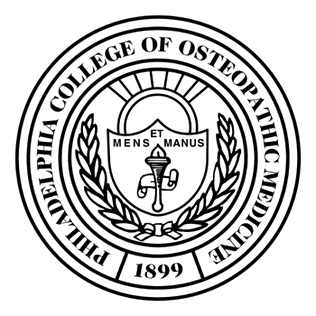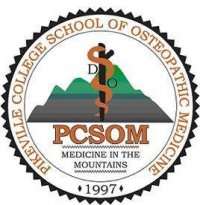Related Research Articles

A physician, medical practitioner, medical doctor, or simply doctor is a health professional who practices medicine, which is concerned with promoting, maintaining or restoring health through the study, diagnosis, prognosis and treatment of disease, injury, and other physical and mental impairments. Physicians may focus their practice on certain disease categories, types of patients, and methods of treatment—known as specialities—or they may assume responsibility for the provision of continuing and comprehensive medical care to individuals, families, and communities—known as general practice. Medical practice properly requires both a detailed knowledge of the academic disciplines, such as anatomy and physiology, underlying diseases, and their treatment, which is the science of medicine, and a decent competence in its applied practice, which is the art or craft of the profession.

Naturopathy, or naturopathic medicine, is a form of alternative medicine. A wide array of practices branded as "natural", "non-invasive", or promoting "self-healing" are employed by its practitioners, who are known as naturopaths. Difficult to generalize, these treatments range from the pseudoscientific and thoroughly discredited, like homeopathy, to the widely accepted, like certain forms of psychotherapy. The ideology and methods of naturopathy are based on vitalism and folk medicine rather than evidence-based medicine, although practitioners may use techniques supported by evidence. The ethics of naturopathy have been called into question by medical professionals and its practice has been characterized as quackery.

Osteopathy, unlike osteopathic medicine, which is a branch of the medical profession in the United States, is a pseudoscientific system of alternative medicine that emphasizes physical manipulation of the body's muscle tissue and bones. In most countries, practitioners of osteopathy are not medically trained and are referred to as osteopaths.
Osteopathic medicine is a branch of the medical profession in the United States that promotes the practice of science-based medicine, often referred to in this context as allopathic medicine, with a set of philosophy and principles set by its earlier form, osteopathy. Osteopathic physicians (DOs) are graduates of American osteopathic medical colleges and are licensed to practice the full scope of medicine and surgery in all 50 U.S. states. The field is distinct from osteopathic practices offered in nations outside of the U.S.—in which practitioners are generally considered neither parts of core medical staff nor of medicine itself; rather, they are considered alternative medicine practitioners. The other major branch of medicine in the United States is referred to by practitioners of osteopathic medicine as allopathic medicine.

A podiatrist is a medical professional devoted to the treatment of disorders of the foot, ankle, and related structures of the leg. The term originated in North America but has now become the accepted term in the English-speaking world for all practitioners of podiatric medicine. The word chiropodist was previously used in the United States, but it is now regarded as antiquated.
A Physician Assistant or Physician Associate (PA) is a type of healthcare professional. While these job titles are used internationally, there is significant variation in training and scope of practice from country to country, and sometimes between smaller jurisdictions such as states or provinces. Depending on location, PAs practice semi-autonomously under the supervision of a physician, or autonomously perform a subset of medical services classically provided by physicians.

Podiatry, or podiatric medicine and surgery, is a branch of medicine devoted to the study, diagnosis, and treatment of disorders of the foot, ankle and lower limb. The healthcare professional is known as a podiatrist. The US podiatric medical school curriculum includes lower extremity anatomy, general human anatomy, physiology, general medicine, physical assessment, biochemistry, neurobiology, pathophysiology, genetics and embryology, microbiology, histology, pharmacology, women's health, physical rehabilitation, sports medicine, research, ethics and jurisprudence, biomechanics, general principles of orthopedic surgery, plastic surgery, and foot and ankle surgery.
Continuing medical education (CME) is continuing education (CE) that helps those in the medical field maintain competence and learn about new and developing areas of their field. These activities may take place as live events, written publications, online programs, audio, video, or other electronic media. Content for these programs is developed, reviewed, and delivered by faculty who are experts in their individual clinical areas. Similar to the process used in academic journals, any potentially conflicting financial relationships for faculty members must be both disclosed and resolved in a meaningful way. However, critics complain that drug and device manufacturers often use their financial sponsorship to bias CMEs towards marketing their own products.
Podiatric Medical School is the term used to designate the institutions which educate students and train them to be podiatrists, which diagnose and treat conditions affecting the foot, ankle, and related structures of the leg. In the United States, only schools which are accredited by the Council on Podiatric Medical Education (CPME) may earn the status of being a Podiatric Medical School. The Doctor of Podiatric Medicine degree is commonly abbreviated D.P.M. degree. The D.P.M. degree is a prerequisite for an individual to be accepted into a CPME accredited residency. The preparatory education of most podiatric physicians — similar to the paths of traditional physicians — includes four years of undergraduate work, followed by four years in an accredited podiatric medical school, followed by a three- or four-year hospital-based podiatry residency. Optional one- to two-year fellowship in foot and ankle reconstruction, surgical limb salvage, sports medicine, plastic surgery, pediatric foot and ankle surgery, and wound care is also available.

Philadelphia College of Osteopathic Medicine (PCOM) is a private medical school with its main campus in Philadelphia, Pennsylvania, and additional locations in Suwanee, Georgia and Moultrie, Georgia.

Western University of Health Sciences (WesternU) is a private medical university in Pomona, California. With an enrollment of 3,724 students (2022–23), WesternU offers more than twenty academic programs in multiple colleges. It also operates an additional campus in Lebanon, Oregon.
Most physicians in the United States hold either the Doctor of Medicine degree (MD) or the Doctor of Osteopathic Medicine degree (DO). Institutions awarding the MD are accredited by the Liaison Committee on Medical Education (LCME). Institutions awarding the DO are accredited by the Commission on Osteopathic College Accreditation (COCA). The World Directory of Medical Schools lists both LCME accredited MD programs and COCA accredited DO programs as US medical schools. Foreign-trained osteopaths do not hold DO degrees and are not recognized as physicians in the United States or in other jurisdictions.
A.T. Still University (ATSU) is a private medical school based in Kirksville, Missouri, with a second campus in Arizona and third campus in Santa Maria, California. It was founded in 1892 by Andrew Taylor Still and was the world's first osteopathic medical school. It is accredited by the Higher Learning Commission. ATSU includes three campuses on 200 acres with seven schools and colleges.
Doctor of Osteopathic Medicine is a medical degree conferred by the 38 osteopathic medical schools in the United States. DO and Doctor of Medicine (MD) degrees are equivalent: a DO graduate may become licensed as a physician or surgeon and thus have full medical and surgical practicing rights in all 50 US states. As of 2021, there were 168,701 osteopathic physicians and medical students in DO programs across the United States. Osteopathic medicine emerged historically from the quasi-medical practice of osteopathy, but has become a distinct and proper medical profession.
The Canadian Osteopathic Association (COA) is a professional association of osteopathic physicians in Canada. The COA has partnered with Michigan State University College of Osteopathic Medicine to increase the number of osteopathic physicians practising in Canada.

The University of Pikeville - Kentucky College of Osteopathic Medicine (UP-KYCOM) is the medical school of University of Pikeville, a private university affiliated with the Presbyterian Church (USA) and located in Pikeville, Kentucky. UP-KYCOM was established in 1997, grants the Doctor of Osteopathic Medicine degree. It is accredited by the Commission on Osteopathic College Accreditation (COCA) and the Commission on Colleges of the Southern Association of Colleges and Schools.

The College of Osteopathic Medicine of the Pacific (COMP) is a private, non-profit medical school for osteopathic medicine located in downtown Pomona, in the U.S. state of California. The college opened in 1977 as the only osteopathic medical school west of the Rocky Mountains. COMP was the founding program of Western University of Health Sciences (WesternU), which now has 8 colleges in addition to COMP, each offering professional degrees in various fields of healthcare. COMP has a single 4-year program, conferring the Doctor of Osteopathic Medicine (D.O.) degree. Graduates are eligible to practice medicine in all 50 states and more than 85 countries.

The College of Physicians and Surgeons of British Columbia is a regulatory college which regulates the practice of medicine in British Columbia. The primary function of the college is to ensure that physicians are qualified, competent and fit to practise medicine. The college administers processes for responding to complaints from patients and for taking action if a physician is practising in a manner that is incompetent, unethical or illegal.

Physicians and surgeons play an important role in the provision of health care in Canada. They are responsible for the promotion, maintenance, and restoration of health through the study, diagnosis, prognosis, and treatment of disease, injury, and other physical and mental impairments. As Canadian medical schools solely offer the Doctor of Medicine (M.D.) or Doctor of Medicine and Master of Surgery degrees, these represent the degrees held by the vast majority of physicians and surgeons in Canada, though some have a Doctor of Osteopathic Medicine (D.O.) from the United States or Bachelor of Medicine, Bachelor of Surgery from Europe.

California Health Sciences University (CHSU) is a private, for-profit university located in Clovis, California. Founded in 2012, the school operates three academic programs, two of which offer doctoral degrees (in pharmacy and osteopathic medicine), and the third offers a masters degree in science. Graduates of the College of Pharmacy (COP) will receive the Doctor of Pharmacy (Pharm D) degree, graduates of the College of Osteopathic Medicine (COM) will receive the Doctor of Osteopathic Medicine (DO) degree, and graduates of the College of Biosciences and Health Professions (CBHP) will receive the Masters of Science in Biomedical Sciences (MSBS) degree.
References
- ↑ "Ontario Medicine Act – Restricted Titles, Section 9". Province of Ontario, Canada. Retrieved 13 November 2011.
- ↑ "British Columbia Medical Practitioners Act, Section 40 Registration of Osteopaths". 1 June 2009. Retrieved 13 November 2011.
- ↑ "Alberta Medical Profession Act, Sections 3 and 18" . Retrieved 13 November 2011.
- ↑ "MSUCOM pilot program targets Canadian students for training". The DO. Archived from the original on 2014-04-24. Retrieved 3 May 2014.
- ↑ "Who Provides Osteopathy?". Ontario Association of Osteopathic Manual Practitioners. Archived from the original on 2014-04-24. Retrieved 28 April 2014.
- ↑ "Predoctoral Accreditation". Archived from the original on 2014-02-14. Retrieved 2014-04-14.
- ↑ "Canadian Osteopathic Practice (.doc)". Archived from the original on 2011-07-06. Retrieved 2009-02-19.
- ↑ Ontario Medicine Act – Restricted Titles, Section 9
- ↑ College of Physicians and Surgeons of Ontario Doctor of Osteopathy Registration Policy Statement
- ↑ "Bylaws" (PDF). College of Physicians and Surgeons of British Columbia. Archived from the original (PDF) on 10 August 2011. Retrieved 29 August 2012.
- ↑ "Alberta Medical Profession Act: Sections 3 and 18". Federation of Law Societies of Canada. Retrieved 29 August 2012.
- ↑ Use of Titles Albert Health Professions Act Schedule 21
- ↑ "AOA International Licensure Summary" (PDF). American Osteopathic Association. April 2013.[ permanent dead link ]
- ↑ "Welcome!". Canadian Osteopathic Medical Student Association. 2012. Archived from the original on 1 November 2012. Retrieved 12 August 2012.